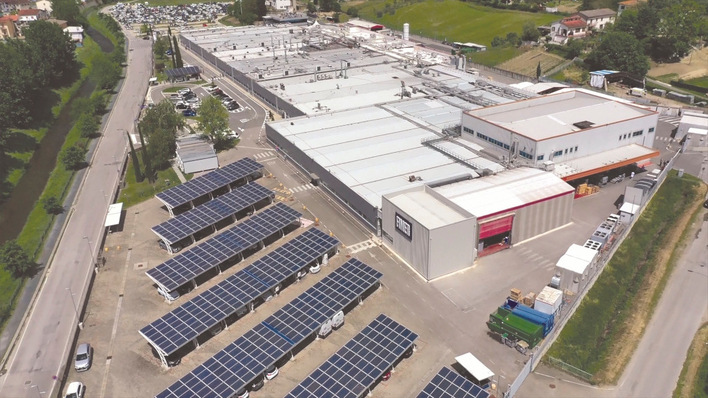Renewable energy is now the backbone of Europe’s power system, with nearly half of the EU’s electricity coming from renewables and solar recently surpassing coal. But as solar and wind take on a larger share of generation, they bring new challenges. The variability of these sources is creating sharp price swings: negative prices during sunny midday peaks and surging costs during “Dunkelflauten” – periods with minimal wind and solar production. This volatility highlights the urgent need for greater flexibility in the electricity market.
These are not technical failures, but market signals. They highlight the need to evolve the current system from a rigid, fossil-based infrastructure into a dynamic, responsive electricity system. The future will be defined by flexibility, the ability to shift consumption and deploy storage when and where it's needed.
The new pillars: Storage, demand-side management, and digitalisation
The European Commission's Clean Industrial Deal and the 2024 electricity market reform both recognise the urgency of this shift. New rules oblige member states to forecast local flexibility needs and promote non-fossil solutions such as demand response and energy storage. The goal is clear: respond in the most efficient way to fluctuations in supply from wind and solar power.
Flexibility, however, is not only about batteries and big industrial consumers. It also includes households with electric vehicles, heat pumps, and rooftop PV. Yet policy lags behind on this issue. As of now, fewer than 30% of households in 10 EU countries have access to smart meters – an essential tool for unlocking demand-side potential. Submetering, dynamic tariffs, and interoperable control systems remain underdeveloped in much of Europe.
Expert insight: 10 key tech trends shaping solar and storage
Germany’s experience is telling. Despite hosting hundreds of thousands of home batteries, their value for system stability is limited because smart pricing signals are absent. If households could react to real-time prices, they would shift consumption and storage behavior – charging batteries when prices are low, feeding energy into the grid when demand peaks. This principle is being tested successfully in other EU countries and should become the norm continent-wide.
Market mechanisms, not more subsidies
Flexibility does not require broad subsidies. The inherent price volatility in Europe’s short-term electricity markets already creates strong incentives. What is needed instead is the removal of regulatory barriers as well as disincentives for flexible consumers, and the creation of fair market access for flexible assets like storage.
Fact check: No increased blackout risk when sun is out
Unfortunately, some EU-level policies risk undermining these efforts. Capacity mechanisms, designed to secure backup power, often favour large gas fired power plants over storage and flexible loads. If poorly designed, they could suppress price signals, making flexibility investments less attractive. This is why SolarPower Europe and national actors such as BayWa r.e. advocate for flexibility-inclusive capacity markets and market-based remuneration models.
Instead of curbing market signals through artificial price caps or overbuilt capacity, Europe should let volatility drive innovation. Where storage and smart consumption are possible, they should be rewarded and not punished by outdated net tariffs or rigid connection rules.
The European landscape: shared goals, diverse progress
Progress across the EU remains uneven. Scandinavian countries lead in smart meter rollout and digital grid integration, while countries like Germany still struggle with fragmented infrastructure and conservative regulation. In France, flexibility is being encouraged through regional balancing and capacity mechanisms, whereas in Italy and Spain, dynamic tariffs and grid-friendly storage schemes are gaining traction.
Expert analysis: Key challenges and opportunities for the European renewable energy market
The European Commission’s upcoming Retail Market Reform (Q1 2026) aims to harmonise these efforts, offering a framework for demand flexibility, dynamic pricing, and the integration of decentralised assets. This reform must deliver robust, cross-border solutions to avoid fragmentation and ensure that Europe scales flexibility fast enough to meet its 2030 climate and electrification targets.
Next steps: A flexibility package for Europe
To unlock the full potential of renewables and create a resilient electricity market, Europe needs a dedicated flexibility package and storage action plan. Key priorities should include:
● Accelerating smart meter rollouts and digitalisation of distribution networks;
● Enabling consumer participation in demand response through dynamic tariffs and simple user interfaces;
● Integrating small-scale flexibility into balancing markets with harmonised access rules;
● Ensuring that new capacity mechanisms prioritise flexibility and decentralised solutions;
● Creating a stable investment framework for storage across Member States.
These efforts should rest on the principl of “as much market as possible, as much regulation as necessary”. In practice, this means removing distortionary incentives, reforming outdated tariff structures, and allowing market actors – large and small – to respond to real price signals.
Conclusion: The future is flexible – and European
Flexibility isn’t just a technical feature of a modern grid. It is the key enabler of a carbon-neutral, secure, and economically viable European energy system. If implemented rightly, it will lower emissions, reduce costs, and improve system resilience – without requiring endless public support.
New report: “EU energy storage action plan needed”
Europe now faces a strategic choice: to lead the global energy transition through market-based flexibility and innovation, or to fall behind by clinging to outdated infrastructure and rigid policies. With the right tools and political will, the continent can meet its goals and light the way for others to follow. (Daniel Hölder/hcn)









